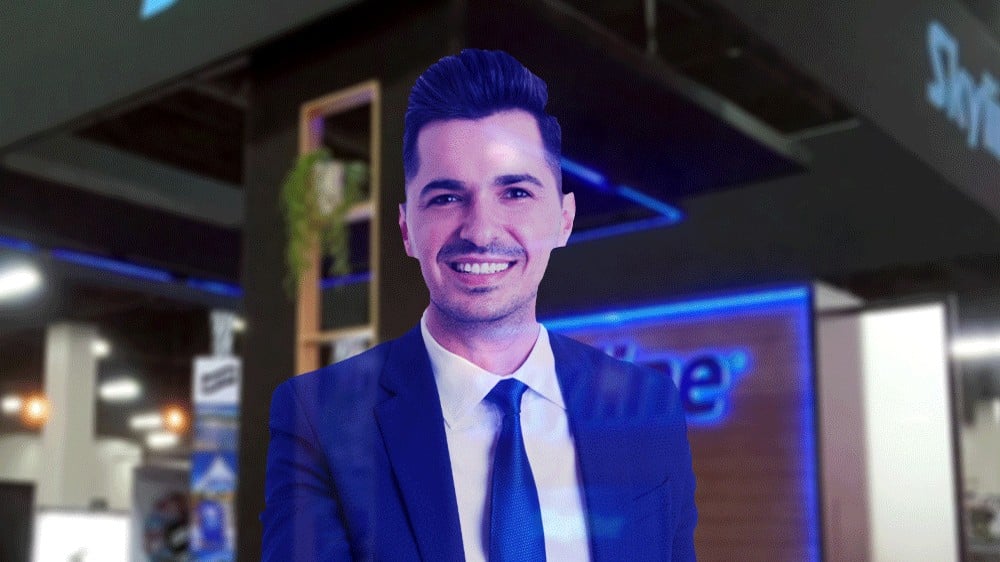What is 3D Holographic Telepresence?
It’s no secret that the COVID-19 pandemic has changed the way all kinds of in-person events (including trade shows, of course) operate.
Sanitization protocols and the distribution of PPE would have been scoffed at a few years ago. Today, though, they’re par for the course, and their absence is a major cause of concern for a lot of attendees. Furthermore, the way people attend trade shows has changed, too. These days, it’s not uncommon for people to attend virtually, staying home and getting in on the action via Zoom or Teams.
In the not-so-distant future, more people might be attending events remotely, including those working at trade show booths. With the development of technologies like 3D holographic telepresence, people could, in theory, show up and work in the booth without having to be there in person. Read on to learn more about hologram technology and how it could revolutionize trade show booth staffing.
What Is 3D Holographic Telepresence?
Before we talk about its potential influence on trade show presenting, let’s cover what 3D holographic telepresence is and how it works.
3D holographic telepresence is a type of evolving technology. It allows for full-motion, three-dimensional video conferencing. Put simply, holographic telepresence systems allow users to project realistic, full-motion, 3D images in real-time. With their help, distant people and objects can be displayed in rooms full of people. They’re able to communicate in real-time audio communication, too.
It’s important to stress that the images projected by holographic telepresence systems are highly realistic. The images of people, as well as the objects surrounding them, are captured, compressed, and transmitted over a broadband network. Then, they’re decompressed and finally projected with the help of laser beams, similar to conventional holograms.
How Could Holographic Technology Change the Trade Show Experience?
In light of the pandemic, many trade shows have been canceled or had their number of permitted attendees significantly reduced. As a result, lots of exhibitors have started looking for new ways to be present and enjoy the benefits trade shows offer (increased audience reach, more sales, better brand awareness, etc.) while still keeping their employees safe.
So far, exhibitors have relied on the use of masks and other types of PPE, as well as social distancing, to keep attendees safe. However, it’s possible that holographic telepresence could help them level up their safety protocols while still providing high-quality booth staffing and in-booth entertainment options.
The following are just a few of the potential benefits exhibitors can enjoy by leaning into holographic technology in the future:
Increased Safety
Increased safety is, of course, one of the top benefits of utilizing holographic telepresence at trade shows and other events. If your employees don’t have to attend the event in person, their chances of contracting or spreading an illness (remember, lots of contagious diseases are airborne, not just coronavirus) are significantly reduced. After all, when you use holograms, there’s no contact and definitely no need to worry about breathing on others.
Reduced Costs
Holographic technology is not cheap by any means. However, using it for trade shows and events could provide some cost reductions for your company. For example, you don’t have to worry about the cost of flying your employees to a new location, booking hotel rooms, and paying for meals. All of these savings can, instead, go into covering the cost of the new technology and providing a more interesting experience for attendees.
Increased Convenience
How convenient would it be for your employees to deliver their trade show presentation via holographic telepresence? Rather than having to fly to a new city or country, settle into a strange hotel, and then drive or catch an Uber to the event center, your employees can simply take their usual commute to the office and handle presentations and attendee interactions from there. Wouldn’t this make life much easier for everyone?
Easier Planning
Speaking of easier, the trade show planning process could be significantly simplified with the help of 3D holographic telepresence. Since you don’t have to worry about travel plans for multiple employees, you can spend more time on other things that matter. This includes perfecting presentations and coordinating booth setups with the event planners. You’ll have less on your plate and more bandwidth to focus on what matters most — providing every attendee with a great trade show experience.
Who Knows What the Future Holds?
Currently, organizations are not using 3D holographic telepresence as part of their strategy for trade shows. Who knows what the future holds, though? A few years ago, nobody thought they’d be wearing masks wherever they go or bragging about their vaccination status, but look at us now.
It’s hard to say what will be trending later in the world of trade shows and events. However, as technology continues to advance, it seems safe to assume that holograms are not off the table.




